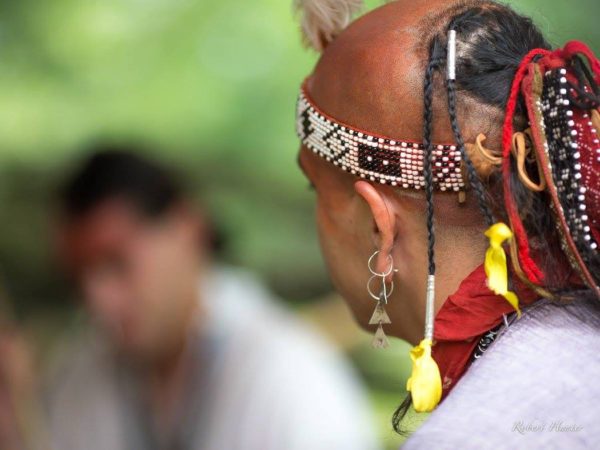
When tribal delegations made their way to Williamsburg in the 18th century, they traveled ancient highways, overland routes that connected Indian nations across hundreds of miles, in territory that was far from uninhabited. This weekend members of the Shawnee, Eastern Shawnee, Seneca-Cayuga, Wyandot, and Delaware nations return to the colonial capital for a weekend that commemorates those visits.
They will join our team of American Indian interpreters for Beyond the Ohio: Native Peoples of Virginia’s Old Northwest, which offers an observance of a shared history between Virginians and the descendants of the Ohio nations. The weekend features a panel discussion, a traditional dance, and an encampment where guests can immerse themselves in aspects of 18th-century Native American life.
The program affords us the opportunity not only to gain insight into Indian-European relations two hundred years ago, but also to reconsider our sense of historical spaces. People may not recognize that this is a Virginia story because the stories have been incorporated into state histories: of Ohio, Kentucky, Indiana, and more.
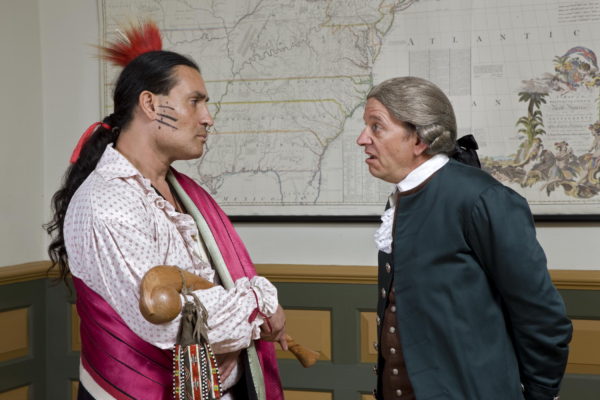
Through the 18th century, Virginia claimed land in the Ohio Country and beyond. However little the name on the map may have resembled reality, it made Williamsburg an important place for a lot of people. For Indian nations wanting to trade, there were regional centers like Detroit, Vincennes, and Wheeling. But Williamsburg was the capital, and it was here that Indian nations came to conduct diplomacy: regarding trade, alliance, and the establishment and policing of boundaries.
Today, many members of this diverse group of Native Americans live in northeastern Oklahoma, the consequence of two centuries of policies that led to Indian Removal and the reservation system. But 200 years ago, these nations were spread out across the vast stretches of land west of the Ohio River, north toward present-day Michigan, west through Illinois, and beyond.

Rather than focusing on a specific event, Beyond the Ohio presents interpretations of the cultural traditions and the broad sweep of issues that concerned Native American visitors to Williamsburg in the 18th century.
“We’re bringing the peoples of the 18th century back into the historical space where these interactions occurred,” said Buck Woodard, Manager of Interpretive Program Development, who has been at the forefront of our American Indian initiatives for a decade.
Buck who co-curated a new exhibition about the Brafferton, William & Mary’s 18th-century Indian school, will moderate a panel discussion to launch the weekend’s activities. “Indian Nations of the Ohio, Past and Present,” 3:30 p.m. Friday at the DeWitt Wallace Museum’s Hennage Auditorium, will consider the state of affairs for Native nations in Oklahoma. It’s an opportunity to hear about what issues are important to the tribal members today, including issues like language revitalization.
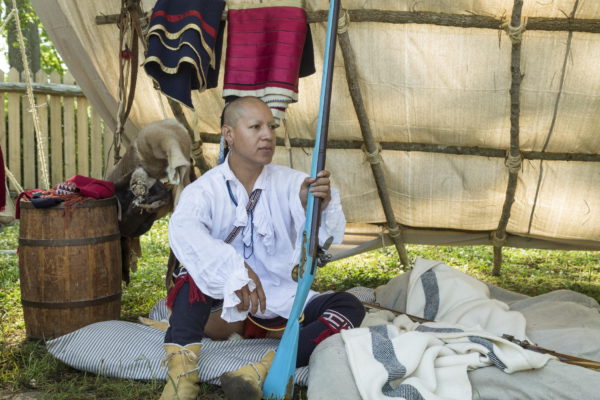
While we seldom think of a Native American presence in Williamsburg being common, in actuality they were familiar guests all over town. When they were in town, they set up camp. One Catawba delegation camped within the walls of the Capitol; the Cherokee once found a spot near the Magazine. Another time a group of Nottoway used a pasture during their visit. For this special weekend, the Indian encampment is situated at the corner of Nicholson and Botetourt, a block behind Raleigh Tavern.
The Native American Encampment is the centerpiece of Beyond the Ohio. Participating tribes will welcome visitors Saturday, Nov. 5 from 10-4:30, and on Sunday, Nov. 6 from 9:30-4.

Stop by and you’ll have the opportunity to participate in the bustle of life in camp. Find out what meats and vegetables are cooking on the fire. Learn about weaving techniques. Play games. Listen to the music made with flutes, rattles, and water drum.
Ask about how 18th-century Native Americans used the bow and arrow. Visit with traders exhibiting furs, weapons, and other goods.

One cabin will feature diplomatic discussions. Listen in, and find out what the policy issues were simmering between Indian nations and Virginians.
Not to mention among the tribes themselves.
In 1751, after peace was brokered between the Nottoway and Cherokee in Williamsburg, they made a large fire in camp and “danced together round it, and concluded the evening with harmony and cheerfulness.”
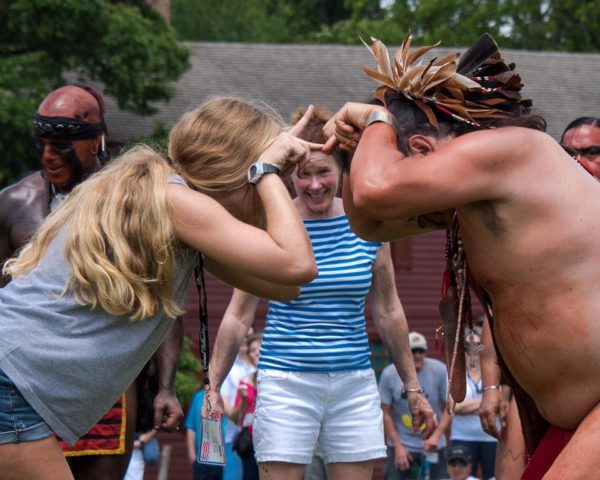
On Saturday from 7-9 p.m., we’ll be recreating that kind of joyful moment with an evening program featuring dances, songs, and stories by the fireside. (This event requires an additional ticket. Purchase yours here.) Buck expects the dance to be the most spectacular part of the weekend. During the stomp dance women make the music with their shell shackles while men sing out in a call and response. Guests will be encouraged to participate.
There’s much to learn for everyone, including our guests from Virginia’s Old Northwest.
“Indian nations are looking back east and finding their own stories,” said Buck. “And this is the right place for a discussion of our origins, values, and our belief in liberty and democracy.”

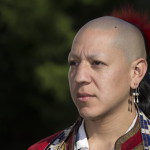
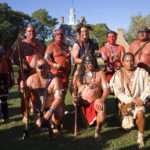
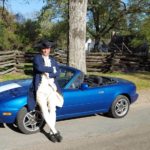
Thanks for the prompt reply
There is an inn in Gettysburg named the Brafferton Inn. It dates back to the 1700’s. Any connection to the Brafferton School?
The school name was given because the money to build it came from a charity of Robert Boyle an English scientist. The charitable money was derived from an English Manor the charity had purchased called Brafferton Manor.
The Brafferton Inn in Gettysburg’s website does not seem to give an answer as to where that name came from. I have a feeling there is no connection.
I have always wondered when Colonial Williamsburg Interpreters inquire as to where I am from. So what would someone from the Great Lakes region (Michigan) have replied? Beyond the Ohio? I always say I am from the other side of the mountains.
Being from Michigan, myself, that is q question that’ I’m interested in knowing the answer to.